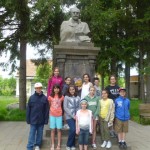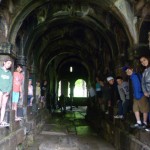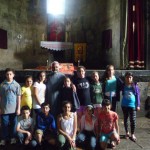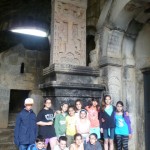May 31, 2011
Today we woke up early in the morning and had breakfast. We ate eggs, pancakes, waffles, and cupcakes. We drank apple juice, hot chocolate, orange juice, and tea. It was so good. Now we are heading to Lori region. It is about 3 hours away.
On the way to Lori region we passed through earth quake areas (Spitak ). Spitak was constructed but there was still some buildings that needed to be rebuilt.
At Lori region we went to see Hovanhess Toumanians museum. His house was turned into a museum. When we first got into his house we smelled smoke, throughout the year, five to six times they make lavash bread. This was the only house in the village that made lavash. The first room that we went in did not have any windows. It was a storage room where they kept flour. Hovanness Toumanian had a big family. He had seven siblings, four brothers and three sisters.
His father was a priest and the church was very close to their house. His dad also played instruments and sang. The whole village came to Hovanness Toumanian’s house to listen to his father play and sing. Most of Hovannes Toumanian’s stories came from listening to the villagers in his house. Hovanness Toumanian’s grandfather was a brave man, he defended his village.
Hovaness Toumanian is a descendent of the Mamigonian family. Toumanian’s were a noble family.
When Hovanness Toumanian was eleven years, he started writing poems. Hovanness Toumanian wrote many stories. His stories became theatrical plays and operas.
When we left the museum we went next to his statue where his heart is buried. We said one of his poems and headed toward Sanahin monastery.
Sanahin structure is older than Haghpat. In Sanahin there are 2 churches. one of he church was built by King Bakradooni in 930 A.D. the names of the churches are St. Astvatzatzin and St. Amenaprgitch. Also between two churches was a university buildtin the 11th century.
Now we are on our way to Haghpat.
In Haghpat there are many churches and many Khachkars. In one of the churches we saw painted pictures on the walls from the 13th century. In the other church there were many holes to store and to preserve food. At one time there were over 10,000 Armenian manuscripts.
Now we are driving back to the hotel.
By Sonia Ourfalian



